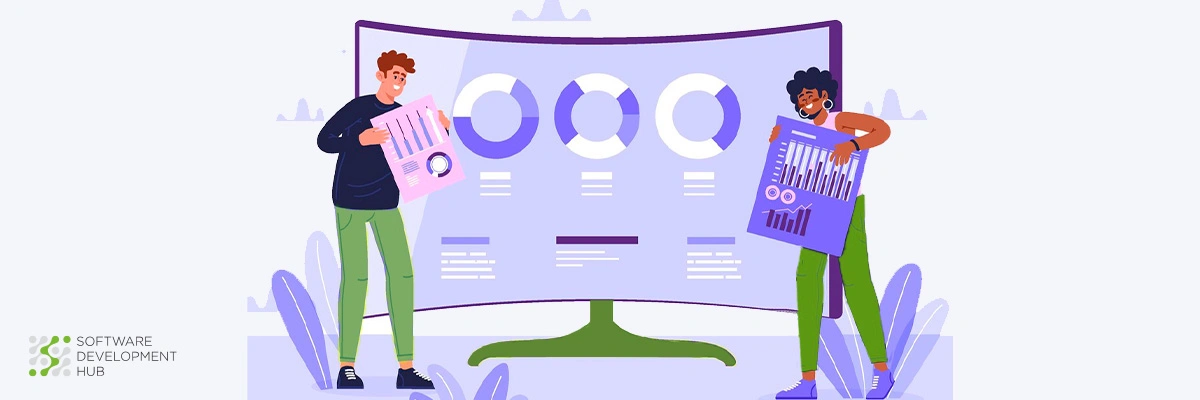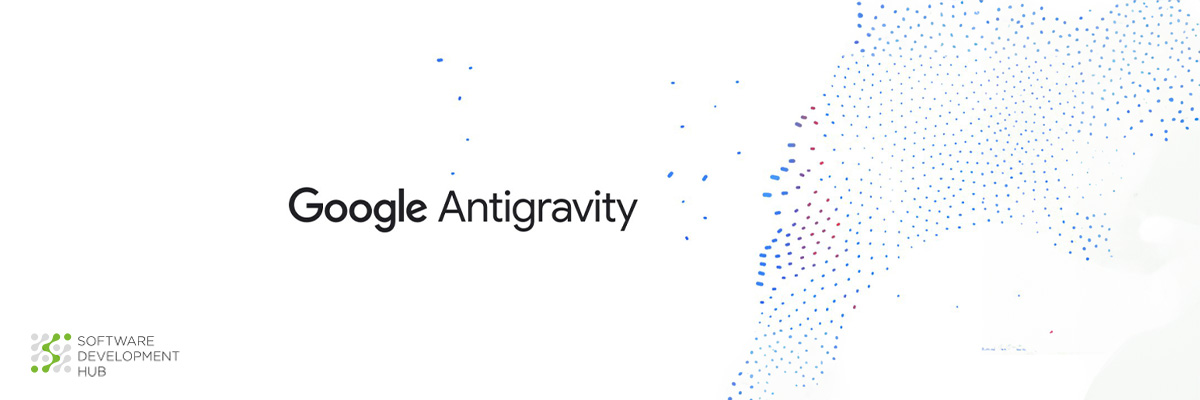No-Code vs Full-Code 2024:key differences to your development strategy
Are you unsure if you should use no-code or full-code for your next project? As we move into 2024, software development is changing quickly. Choosing the right approach can make or break your strategy.
In this guide, we'll explore the key differences between no-code and full-code development. These differences are changing the industry. Whether you're a developer or a business owner, understanding these distinctions is important. This will help you make better decisions.
We'll look at all the things that make these two approaches different. This includes learning curves, development speed, customization, and scalability. By the end, you'll know which method is best for your goals and resources.
Understanding No-Code Development
Ever wanted to build an app as easily as Lego blocks? That's what no-code development is about. With no-code, you can create apps without writing a lot of code. It lets you use simple drag-and-drop tools to build apps. This makes app creation faster and easier, even for people with no coding skills. No-code development gives you more control over your app's development. You can customize the app to fit your needs. It's a great way for anyone to turn their ideas into reality.
No-code development lets you build apps without writing code. You use visual tools and drag-and-drop to bring your ideas to life. This approach makes it easy for anyone to create software. No coding skills are needed. You can build applications quickly and efficiently. The process of creating digital projects is similar to building with blocks. You're making something complex and useful, but doing it in a more intuitive and visual way.
Definition and Core Principles
At its heart, no-code development is about making software creation accessible to everyone. The idea is that anyone, even without coding skills, can create digital solutions.
Imagine you're playing a video game. In this game, you can create your own levels. You don't need to write code. Instead, you design and build something that works. This is what no-code development is about.
The core principles include:
-
Visual-first approach
-
Drag-and-drop functionality
-
Pre-built components and templates
-
Intuitive user interfaces
No-code platforms aim to make the entire code-less development procedure as smooth as possible, turning complex coding tasks into simple visual operations.
Key Features of No-Code Platforms
No-code platforms boast a variety of features that fascinate users who find programming a very boring ordeal. These are the amazing features that make these platforms the choices of many developers:
Visual Design Tools
Have you ever blackboarded a big flow chart back in the days in school? Then imagine the no-code platforms that signify the same thing, although much cooler. They offer visual tools that permit you to plan the design and the direction of your app. You can pull the parts of a puzzle into one board, bind them together, and get your program forming before your very eyes. It's like fooling around with a professional whiteboard!
Pre-built Templates
No-code platforms contain a wealth of already made templates. It's like owning a book with the master's chef's recipes. Do you need an e-commerce website? There is a template for it. Want to make a project management tool? Don't worry, there is still one!
Integrations
As a result, it can be said that the tools are not alone in this endeavor. They behave like a team and allow users to integrate popular tools without any hassle.
Would you like your app to feature in-email notifications? On the other hand, you may want it to sync with your CRM? Sure! Usually, no-code platforms provide simple integrations to a wide range of services.
Instant Preview
The favorite attribute among them is being able to watch your invention turning into reality right in front of your eyes. Actually, it lets you instantly preview how your app will look and work when it is being constructed.
Understanding Full-Code Development
Let's talk about full-code development now. Full-code development is the usual way to build software apps. This means writing lines of code from the start. You use programming languages like Python, Java, or JavaScript.
Imagine you're writing a story. You start with a blank page. Then, you craft each sentence and paragraph to tell your story. That's like full-code development in software. It's where you create every part of the software from scratch. You don't use any pre-made pieces. Instead, you make the whole thing yourself, just like writing a novel.
Total Control
With full-code, you control every part of your software. You can change the user interface and the backend. You are the leader of your software team. It's like being a chef who makes a dish from the start. You choose each ingredient and control every step of cooking.
Being flexible
This allows you to adapt easily. Flexibility lets you change and try new things. It helps you handle different situations. Being flexible is important. Full-code offers great flexibility. If you can think of it, you can create it. There are no set limits or borders. Think of it as a remote for your TV, but for software. You can change and adjust every detail as much as you want.
Language Types
There are many types of language. People use different languages in different ways. It's important to understand the different language types. Developers can choose from many programming languages. Each language has unique strengths and is good for different kinds of projects.
It's like knowing many digital languages. You can pick the right one for what you need. One language may be versatile, another very fast, and another used everywhere. For example, Python is versatile, C++ is high-performance, and JavaScript is widely used.
Importance in Complex Projects
Complex projects need careful planning. You must understand all parts of the project. This helps you manage the project well. Knowing the importance of each part is key. It ensures the project succeeds. Without this, the project may fail. Understanding importance helps you prioritize tasks. This leads to better results. Complex projects require this knowledge. When working on big, complex projects, full-code development is usually the focus. Here's why:
Customization
For projects with unique needs, full-code allows developers to design every part of the software. Imagine you're building your own sports car. You wouldn't use normal parts, you would create each part exactly how you want it. That's what full-code does for complex software projects.
Improving Performance
Performance optimization helps your website run better. You can make changes to improve how quickly pages load. This boosts user experience. Start by checking your site's speed. Then, make tweaks like reducing image sizes or enabling caching. Small changes can make a big difference. Optimizing performance helps more people easily access your content.
With full-code, developers can improve performance in detail. This is important for apps that need to handle a lot of data or complex math. It's like making a race car engine work better. Each part is changed to be as efficient and high-performing as possible.
Working with Older Systems
Many big companies have existing systems. New software needs to work with these systems. Full-code development gives the flexibility to create custom connections between the systems. Think of it like building a bridge between an old city and a new one. Full-code helps you design that bridge to connect the two perfectly. It doesn't matter how different the cities are.
Stay Safe
For applications handling sensitive data, full-code development lets you add custom security. This helps create stronger, more reliable security measures. It's like being able to design your own security system. This is better than using a pre-made solution. You can create the system you need. This gives you more control than using a ready-made option.
Choosing Between No-Code and Full-Code
Becoming aware of the major differences, the next question is how to make a decision. Let's break it down.
The decision will not be universally the same for all people, either no-code or full-code. Some aspects are the most important ones that need to be paid attention to. These are the factors to consider:
- Project Complexity
Is your project very complicated? Simple solutions may be the ones that use no-code while more complicated systems need coding for full completion.
- Time Constraints
Do you want to launch something immediately? No-code may be the fastest way, but if you have the time, Full-code will be the best thing.
- Budget
Be mindful of both upcoming expenses and long-term ones. No-code may have lower initial costs but continuous subscription fees are applied.
- Technical Expertise
Have you got a skilled team of developers or are you starting from a scratch? This can highly impact your choice.
- Scalability Needs
Contemplate your future growth. Is there a possibility for your app to facilitate millions of users eventually?
- Customization Requirements
To what extent does your app need to be flexible? If your application demands a truly one-of-a-kind feature, you might require full-code.
Remember, it is not always an either-or situation. Many of the most successful projects use both methods to some degree.
Read also No Code/Low Code App Development
Conclusion
As we looked at No-Code and Full-Code development, both have good points. The best choice depends on your needs, resources, and goals. No-Code platforms let average people quickly build things cheaply. Full-Code development offers more customization and ability to handle complex projects. Choose the method that fits your situation best. Both can revolutionize how you build.
Consider your needs carefully. Think about how hard it is to learn, how long it takes to get ready, and how well it works with other things. A mix of No-Code and Full-Code can often work best. This lets businesses balance speed with customization. Using the right development approach lets you unlock new things, improve your processes, and drive innovation. Embrace the future of development. Take the first step to transform your digital plan now.
Categories
Share
Need a project estimate?
Drop us a line, and we provide you with a qualified consultation.








